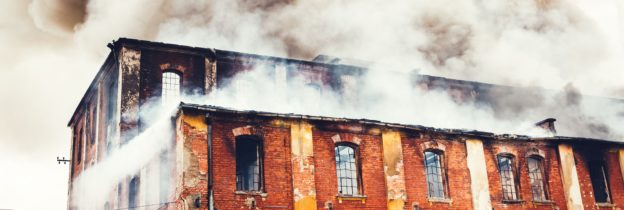In Phila. Indem. Ins. Co., a/s/o Baldwin Real Estate Corp. v. Barker, 2021 U.S. Dist. LEXIS 87642 (N.D.N.Y. May 7, 2021), the United States District Court for the Northern District of New York considered whether the plaintiff, Philadelphia Indemnity Insurance Company (PIIC), a subrogating insurer, could prove its damages claim through the testimony of its adjuster, without an damages expert. The court held that, where the plaintiff’s damages proof was based on repair costs and the defendant offered no expert of its own related to the diminution in fair market value, the plaintiff could prove its damages using the adjuster’s testimony.
PIIC provided property insurance coverage to Baldwin Real Estate Corporation (Baldwin). The policy insured a four-unit apartment building in New York. A fire destroyed the building and the contents within. Following the loss, Baldwin filed a claim with PIIC seeking the recovery of its losses. PIIC honored the claim and filed a subrogation action against Kathleen Burke Barker (Barker), alleging that her careless disposal of smoking materials caused the fire. PIIC sought to recover the amount it paid to restore the building to its pre-loss condition.
As evidence of damages, PIIC produced the report of Christopher Vaughn (Vaughn), a general adjuster. The report included, among other things, invoices from the contractor responsible for the reconstruction of the building and the contractor responsible for the code upgrades. Although PIIC produced Vaughn’s report in support of its damages claim, PIIC did not identify Vaughn as an expert. PIIC disclosed only its consulting fire investigator as an expert, whose report addressed the cause of the fire rather than the damages the fire caused.
Barker filed a motion for summary judgment, arguing that PIIC failed to sufficiently prove the damages it sustained as a result of the fire for two reasons. First, Barker argued that PIIC needed an expert to support its claimed damages. Second, Barker argued that the report prepared by the general adjuster reflected only an agreed-to settlement amount rather than the actual cost to restore the building. The court rejected both arguments.
In New York, “the proper measure of damages for permanent injury to real property is the lesser of the decline in market value and the cost of restoration.” Once the plaintiff has proven one of the two measures, the burden shifts to the defendant to prove “that a lesser amount will sufficiently compensate for the loss.” As a result, if the defendant does not offer evidence of an alternative measure of damages, the measure of damages introduced by the plaintiff will apply.
The court first considered Barker’s argument that PIIC needed an expert to sustain its claimed damages. The court found that, through Vaughn, PIIC presented evidence of the actual cost to rebuild the building, which the court found would require no “scientific, technical, or other specialized knowledge” so as to even permit an expert to testify under Evidence Rule 702, let alone require one. Thus, the court determined that PIIC met its burden of showing what it actually paid to rebuild the building by supplying the invoices it accrued paying contractors.
Next, the court considered Barker’s argument that the report prepared by the general adjuster reflected only an agreed-to settlement amount. PIIC disputed Barkers claims, arguing that the report reflected the cost of restoration. Because there was a dispute of material fact as to what the report showed, the court denied Barker’s motion for summary judgment, noting it would be up to the factfinder to determine what the costs in the report reflected and whether PIIC met its burden of proof.
The Barker case establishes that, in New York, there is no specific requirement that damages to real property be proven through expert testimony. However, if a subrogating carrier seeks to recover the cost of restoration, in addition to having its adjuster testify as to the cost of repairs, it should also consider having its adjuster, as an expert, testify that, based on his or her knowledge, training and industry experience, the costs were fair and reasonable, and the work necessary, to restore the building to its pre-loss condition. Doing so will lower the risk of the subrogating insurer failing to prove the essential element of damages.

